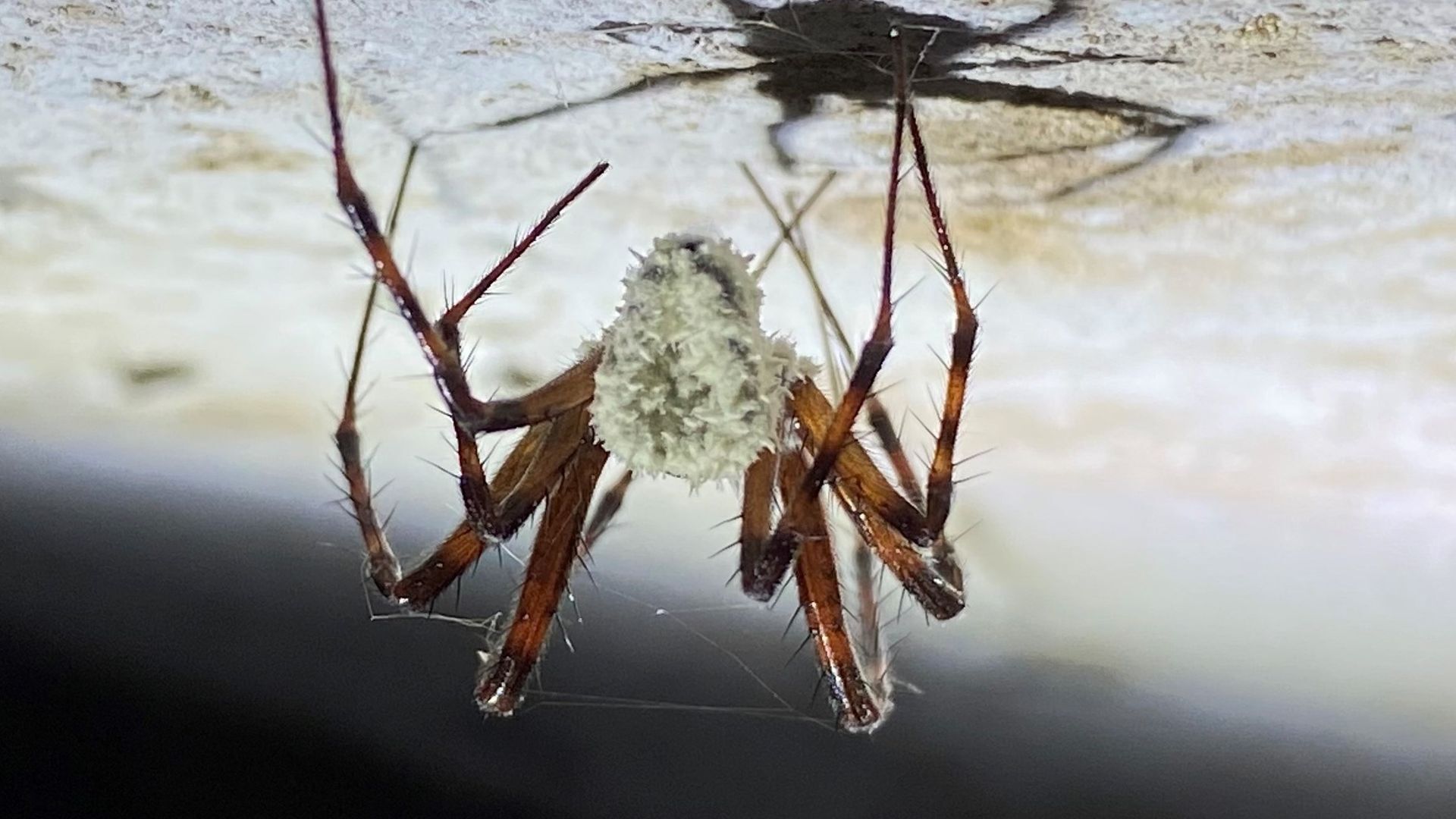A parasitic fungus is creating so-called zombie spiders from the United Kingdom to Minnesota. Scientists say the fungus progressively eats away at the arachnids, leaving behind only crusty white carcasses that sprout spores that will invade more spiders, as reported by The Wall Street Journal on Thursday.
‘Couldn’t sleep for weeks’
“I’m not scared of any spiders,” Anna Baddams, who collected spiders when she was younger, told the Journal. “But these ones freaked me out.”
Baddams discovered hundreds of zombie-like spiders in her shed in England this winter.
“I couldn’t sleep for weeks,” she said. “I still don’t open my windows in case they crawl in.”
Download the SAN app today to stay up-to-date with Unbiased. Straight Facts™.
Point phone camera here
Discovery in 2021
Researchers first discovered the fungus in 2021 while making the BBC’s “Winterwatch” series. An infected spider was found on the ceiling of an asbandoned gunpowder shop in Ireland. The fungus was declared a new species and was named in honor of renowned British broadcaster and biologist David Attenborough— dubbed “Gibellula attenboroughii.”
Since then, scientists have studied how it infects and consumes its host.
“It consumes the host’s body from the inside out,” Joao Araujo, a mycologist at the Natural History Museum of Denmark, told the Journal.
Manipulates its host
Scientists say the fungus then infiltrates the organs, and it is difficult to determine how long the arachnids stay alive when infected, but some research indicates it could be up to three weeks. During the infection period, the fungus controls the behavior of the spiders — often manipulating them to travel to unfamiliar places like underneath leaves where more spores are likely to sprout, ensuring the survival of its uninvited parasitic guest.
A zombie apocalypse unlikely for humans
For those concerned about the infection leading to a human zombie apocalypse, fear not. The fungus isn’t a danger to humans, and if it were to be, it would take a long time to evolve to be one.
“Infecting humans would require many, many millions of years of genetic modifications,” Araujo said.
Arajuao also told CNN in February that the study of the fungus could also help further medical research for humans.
“Imagine, [with] a fungus that can control the behavior of a spider, which metabolites they’re releasing in the brain of this spider,” Araujo said. “This could be something really revolutionary for Alzheimer’s and degenerative diseases and the ones that affect the brain.”
contributed to this report.
